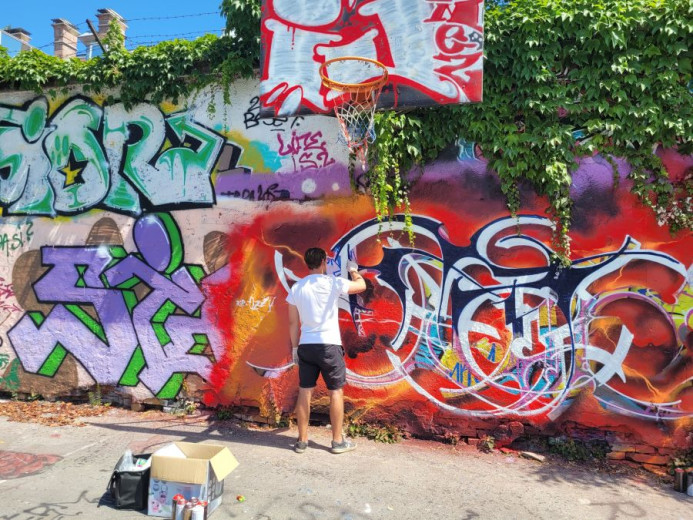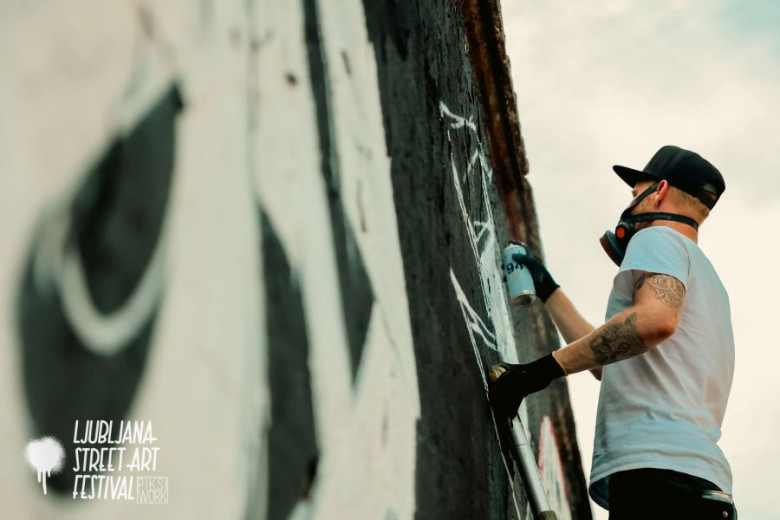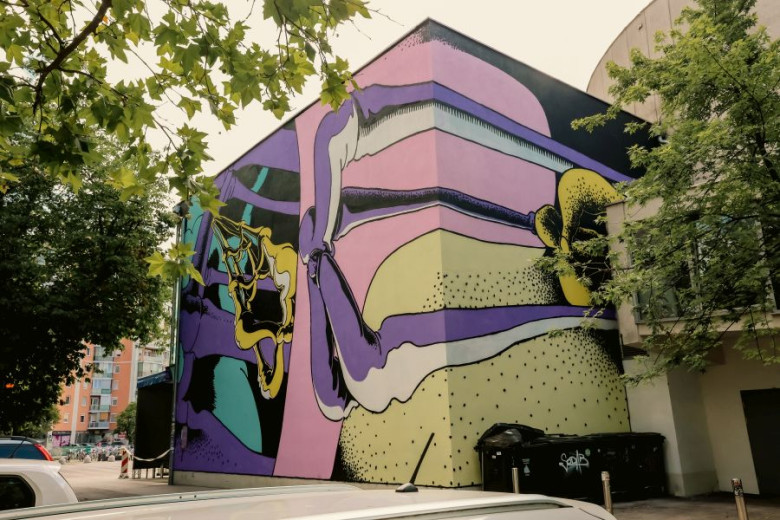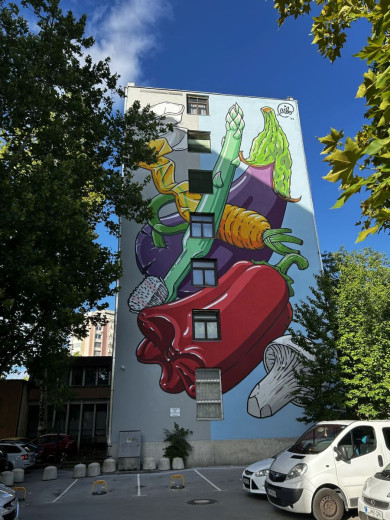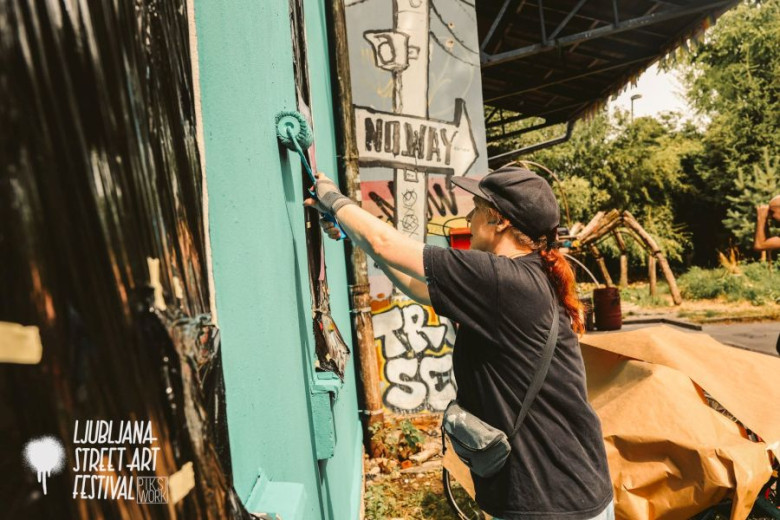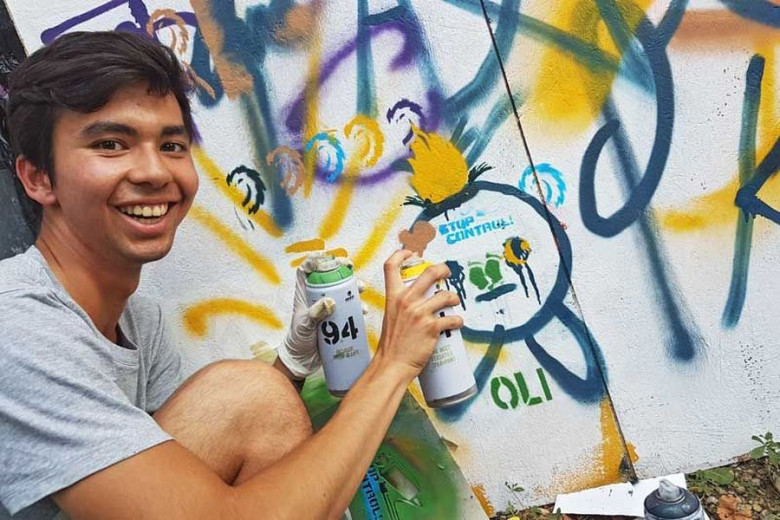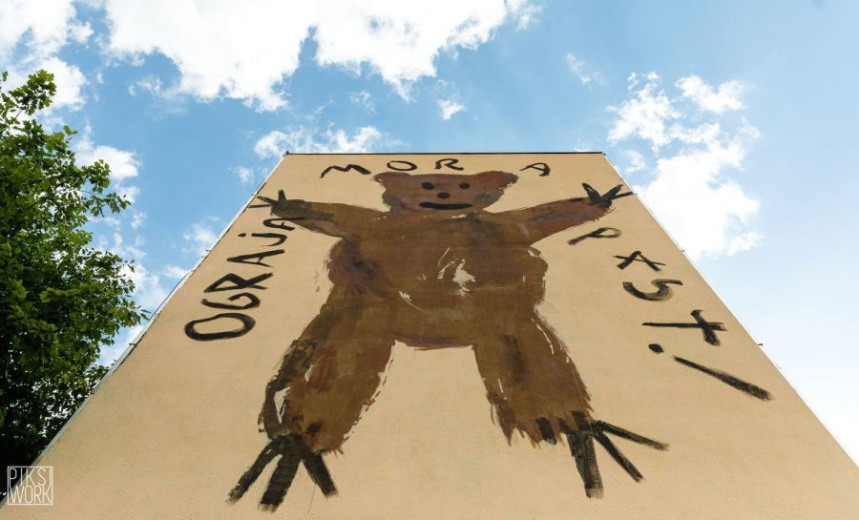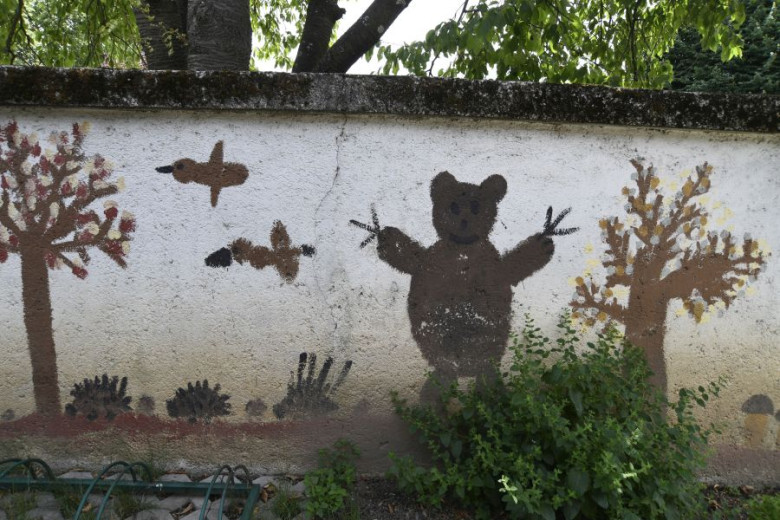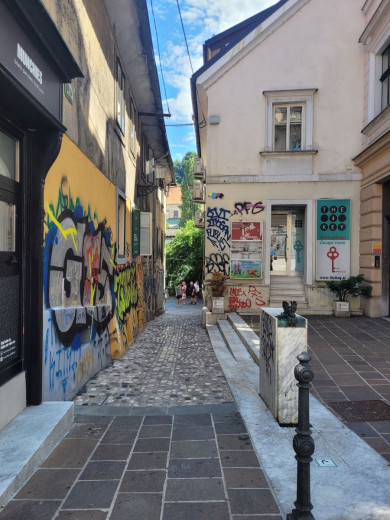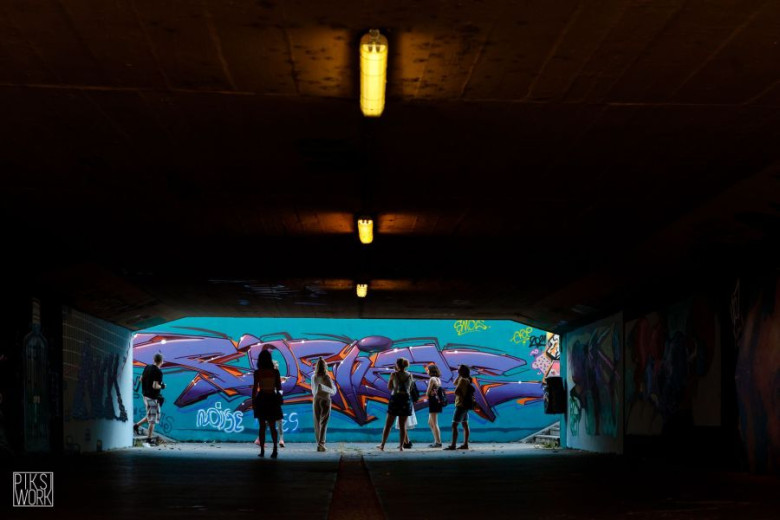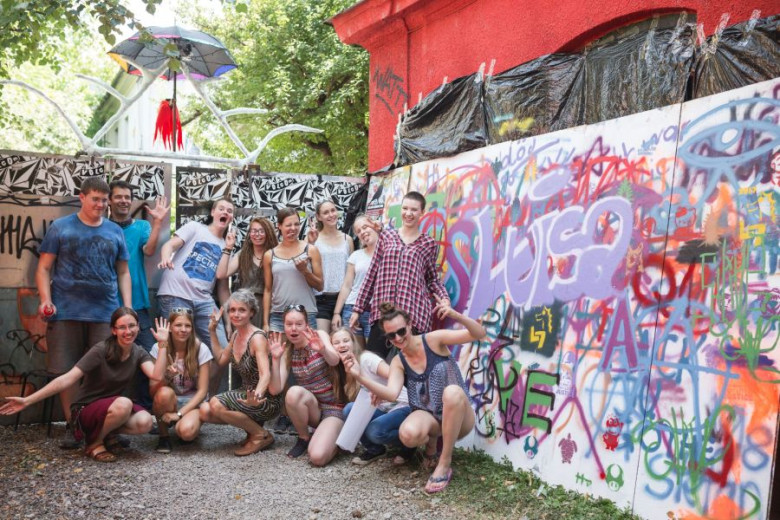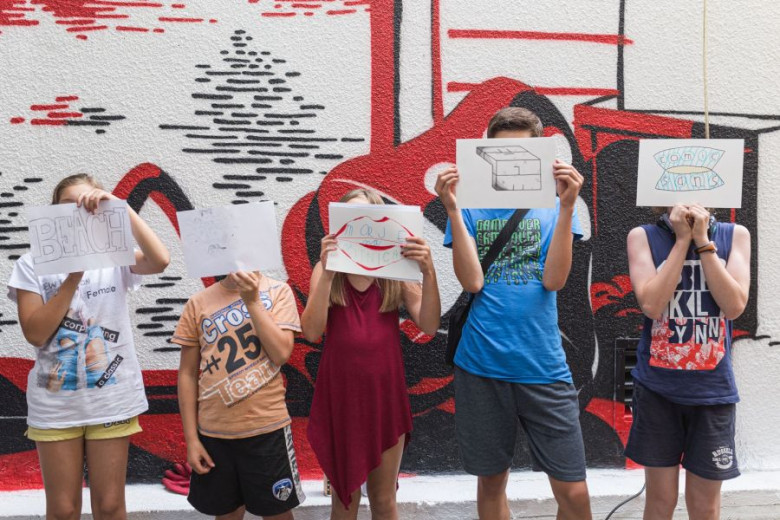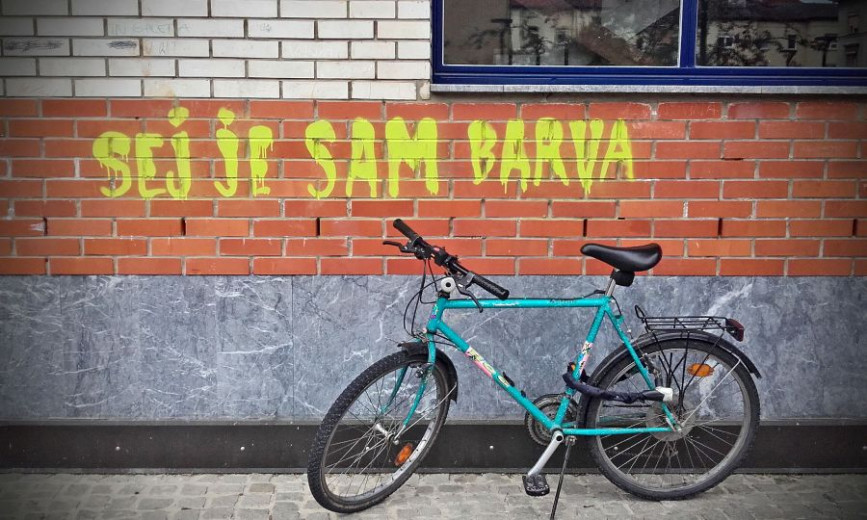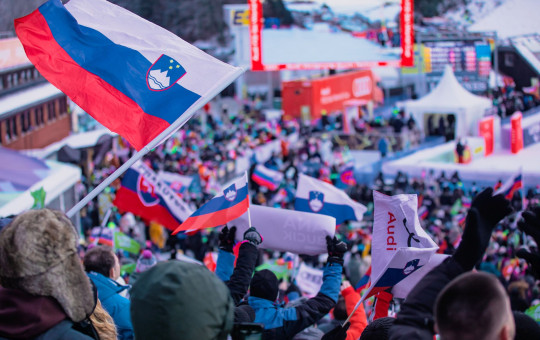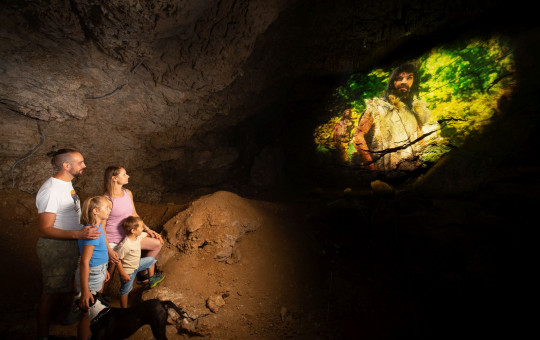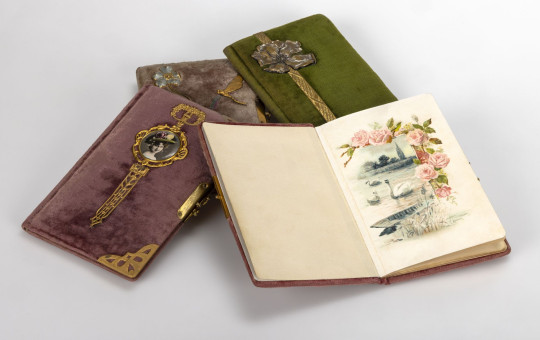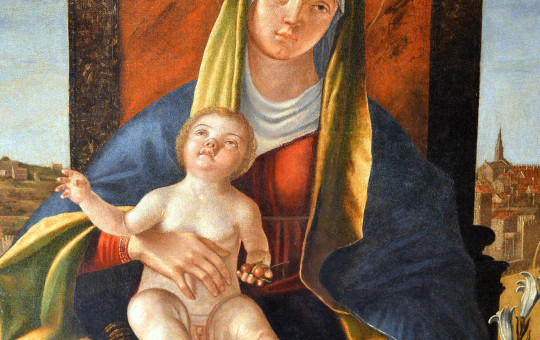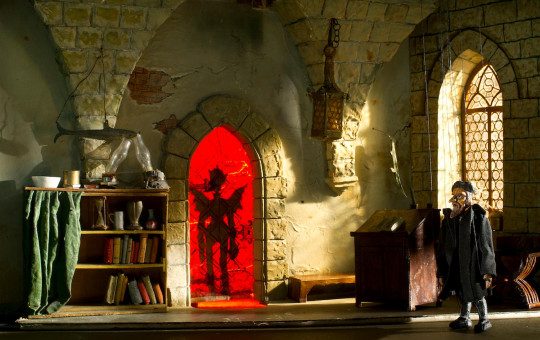Date: 8. August 2025
Time to read: 2 min
As we stroll through town and are suddenly surprised by a colourful figure on a wall or a witty, provocative – perhaps ironic – message on the side of an underpass, we often don't realise that we’ve encountered a piece of contemporary urban culture: street art.
This striking art form combines rebellion, creativity and social commentary, all of which is reflected in graffiti, murals, stencils, stickers and mosaics.
The walls of Ljubljana are thus becoming open-air galleries, and viewing these works of art is almost an urban pilgrim’s path for lovers of contemporary art.
It's true. There are also scribbles, offensive remarks and writing on historic buildings. Of course, that’s not acceptable. But graffiti has long ceased to be merely a form of vandalism. Through various initiatives, festivals, artist residencies, street galleries and guided tours, it enriches the character and cultural life of Slovenian towns. Street art lends city centres a distinctive urban identity – especially in Ljubljana, which has become a hub for this type of creativity.
Historical context
Graffiti is not a new phenomenon in Slovenia.
During World War II, partisan and political slogans adorned the walls of Ljubljana's streets.
The next wave of graffiti appeared in the 1980s with the punk movement, when symbols of rebellion, including swastikas, appeared on walls as a provocation and social commentary.
Later, street artists such as the Strip Core group continued the tradition with new techniques and more diverse messages.
They were followed by groups such as Mizzart, Mega Medi Group, Klon Art and others, who transformed the street space into a creative laboratory, also influenced by hip hop subculture.
Artists and iconic motifs
Slovenian street art is not known for having a large number of graffiti artists; the streets of Ljubljana are often brought to life by foreign artists. Nevertheless, there are some recognisable names:
- ZEK crew is a graffiti group known for its "rabbit" motif, which can be found in various variations – from humorous to socially critical.
- Mojca is a female graffiti artist known for her wall paintings in the form of portraits.
- Joke 42 draws attention to consumerism with the motif of an empty shopping cart.
- Rone 84 is a versatile street artist who uses stencils, stickers, spray paint and other means of visual communication.
- HUR is one of the most active graffiti groups in Slovenia and can also be found abroad.
- Lo Milo often creates interactive works that relate to elements of urban space – windows, doors, details. He is also known for his abstract graffiti.
- Artnak explores new areas of graffiti and street art with his interventions – for example, graffiti printed on walls.
Known and legitimate locations
Currently, Ljubljana has around 20 official locations where graffiti is permitted – underpasses, concrete walls, interior walls of sports fields, skate parks, etc. However, these are not the only places offering interesting images and content. The real explosion happens on unofficial "canvases" where so-called "writers" create their work – authors of illegal graffiti, which many consider vandalism, but for many others represents raw artistic sincerity.
The largest concentration of graffiti in one place is undoubtedly in the Metelkova mesto Autonomous Cultural Zone, where murals often carry political and socially critical messages.
It was similar at the former Rog factory, especially before its closure and renovation, when artists such as the world-famous Italian muralist BLU via their works created a cultural and political dialogue. The murals are still there, but Rog has now been renovated.
-
 Murals brighten old facades, giving new life to forgotten corners of Ljubljana. Photo: UKOM archive
Murals brighten old facades, giving new life to forgotten corners of Ljubljana. Photo: UKOM archive
-
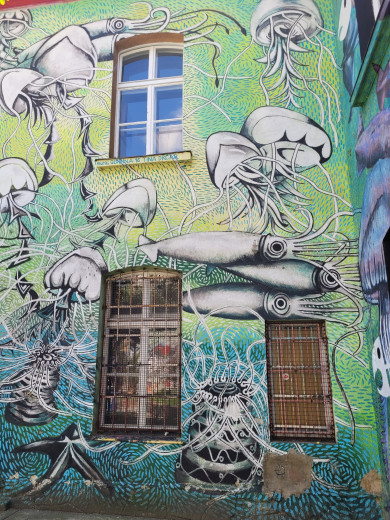 Metelkova’s walls change constantly, offering a living gallery that never stands still. UKOM archive
Metelkova’s walls change constantly, offering a living gallery that never stands still. UKOM archive
-
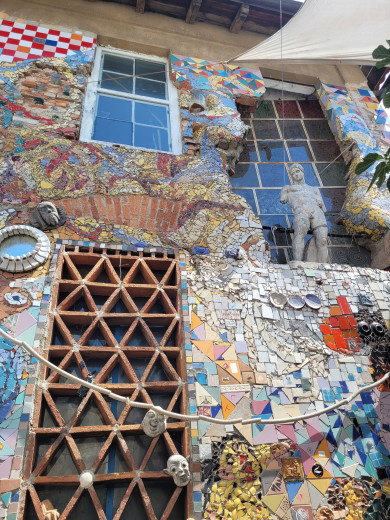 Murals and mosaics in Metelkova often carry strong political and social messages. Photo: UKOM archive
Murals and mosaics in Metelkova often carry strong political and social messages. Photo: UKOM archive
Another well-known mural is the huge bear painted on a building near Kino Šiška. It was created by Spanish artist Escif in 2021. The bear was inspired by a drawing by children from the Vodmat kindergarten at the Escifat art workshop, with the added message "The fence must fall," which refers to migration, borders and free access to space.
Invader and interactive art
French artist Invader, known for his mosaics made of ceramic tiles reminiscent of retro video games, occupies a special place in Ljubljana's street art story. He first visited Ljubljana in 2006 and carried out a major project in 2021, when he installed around 20 mosaics around the city, ranging from aliens to images of dragons.
Interesting fact: through his FlashInvaders app, visitors can photograph his mosaics, collect points and compete with others around the world.
Art thus becomes interactive and encourages exploration of city streets.
-
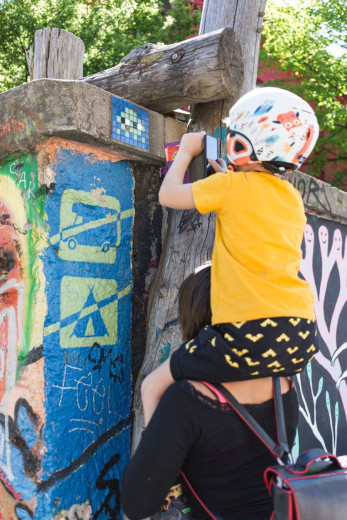 The FlashInvaders app turns art into a game. Photo: Nejc Ketis
The FlashInvaders app turns art into a game. Photo: Nejc Ketis
-
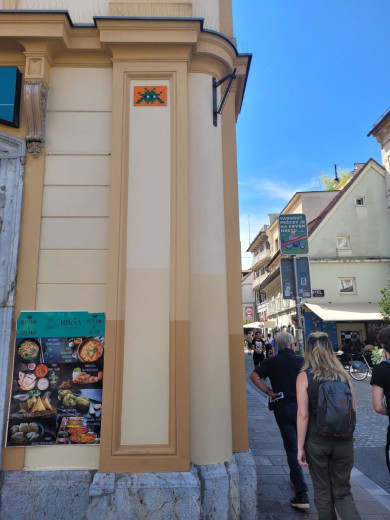 Invader hid mosaics across the city. Photo: UKOM archive
Invader hid mosaics across the city. Photo: UKOM archive
-
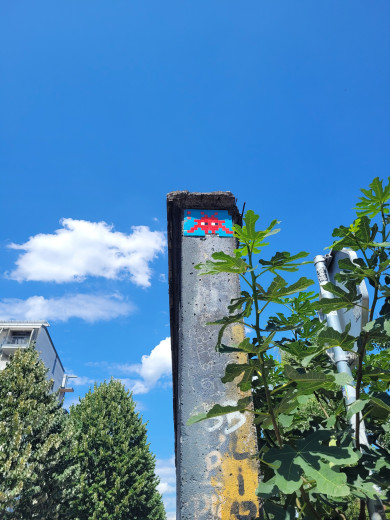 French artist Invader, famed for retro game-style mosaics, left his mark on Ljubljana with about 20 works in 2021. Through his FlashInvaders app, visitors can “collect” them, turning street art into an interactive city adventure. Photo: UKOM archive
French artist Invader, famed for retro game-style mosaics, left his mark on Ljubljana with about 20 works in 2021. Through his FlashInvaders app, visitors can “collect” them, turning street art into an interactive city adventure. Photo: UKOM archive
Alternative Tours in Ljubljana
These are tours with a story that you won't find in tourist brochures at a classic tourist information centre. On the Ljubljana Graffiti Tour, local guides will lift the curtain to reveal the panorama of Ljubljana's street art.
The tour takes you through the old city centre, along the Ljubljanica river, past the Rog factory, all the way to the Metelkova mesto Autonomous Cultural Zone.
If you want to learn more, you may even feel the urge to learn how to make graffiti yourself, in which case you can take part in the creative workshops of the Ljubljana Street Art Tour & Workshop.
Have you ever noticed shoes hanging on electric wires? Do you know what they mean? This unusual phenomenon first appeared in Ljubljana around 2011 on Trubarjeva Street.
And although you may not find them today, these shoes have become the logo of Alternative Ljubljana.
In some countries, hanging shoes have many meanings: they can mark the place where someone lost their life, elsewhere students throw their shoes on the wire at the end of their schooling, and in some places they mark the territory of a street gang. But what about in Ljubljana?
It all started with a nice gesture when a former saleswoman in one of the shoe stores on Trubarjeva Street threw a pair of sneakers onto the wire above the street as an unusual but effective way to promote her business. The initial throw triggered a real chain reaction. Passers-by began adding their own pairs, and over time, various types of footwear appeared on the wire.
Alternative Ljubljana jokingly named this unique street phenomenon "shoeffiti" – a combination of the words "shoes" and "graffiti."
Although city services have removed them several times – especially during major holidays, such as the festive month of December, when the city is decorated with festive lights and decorations – the practice keeps coming back.
Ljubljana Street Art Festival
Did you know that Ljubljana has its own street art festival? It was first held in 2019 and has since become a unique event in Slovenia, connecting the artistic, activist and academic spheres.
The Ljubljana Street Art Festival is the first festival of its kind in Slovenia and one of the few in the region that promotes street artists, provides education and guides visitors through cities through the eyes of art.
Through numerous events, it reveals the meaning of graffiti and murals as part of an everyday dialogue with urban space. The festival also supports young and emerging artists, thus ensuring the future of the street art.
Reading the streets
Streets are not just places to move through – they are also storytellers. Graffiti– when it’s more than just scribbling – carries important messages about people, values and the spirit of the times.
Even the rude ones, the "scribbles" that seem to offend passers-by, convey a message.
Perhaps they remind us that not every scrawl is art and not every thought a breakthrough? Truly good graffiti is, without doubt, an invisible chronicle of the places we visit and a reflection of the social pulse.

